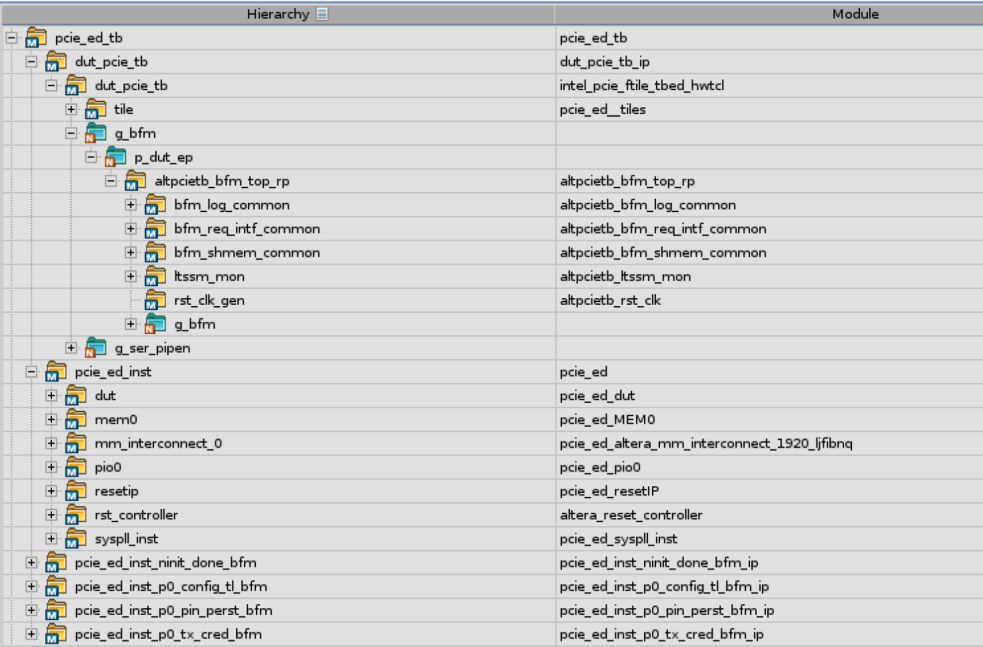Visible to Intel only — GUID: jmh1616028526848
Ixiasoft
3.3.2.2. PIO Design Example Testbench
The figure below shows the PIO design example simulation design hierarchy. The tests for the PIO design example are defined with the apps_type_hwtcl parameter set to 3. The tests run under this parameter value are defined in ebfm_cfg_rp_ep_rootport, find_mem_bar and downstream_loop.

- Issue a memory write command to write a single dword of data into the on-chip memory behind the Endpoint.
- Issue a memory read command to read back data from the on-chip memory.
- Compare the read data with the write data. If they match, the test counts this as a Pass.
Trace the transition of signal p0_rx_st_sop_o[0] (for example h'0 to h'1) for the first memory write. It is followed by a memory read at the Avalon® -ST RX interface of the F-tile Hard IP for PCIe. The Completion TLP appears shortly after the memory read request at the Avalon® -ST TX interface. The memory write and read transactions and the Completion TLP are shown in the following waveforms.
